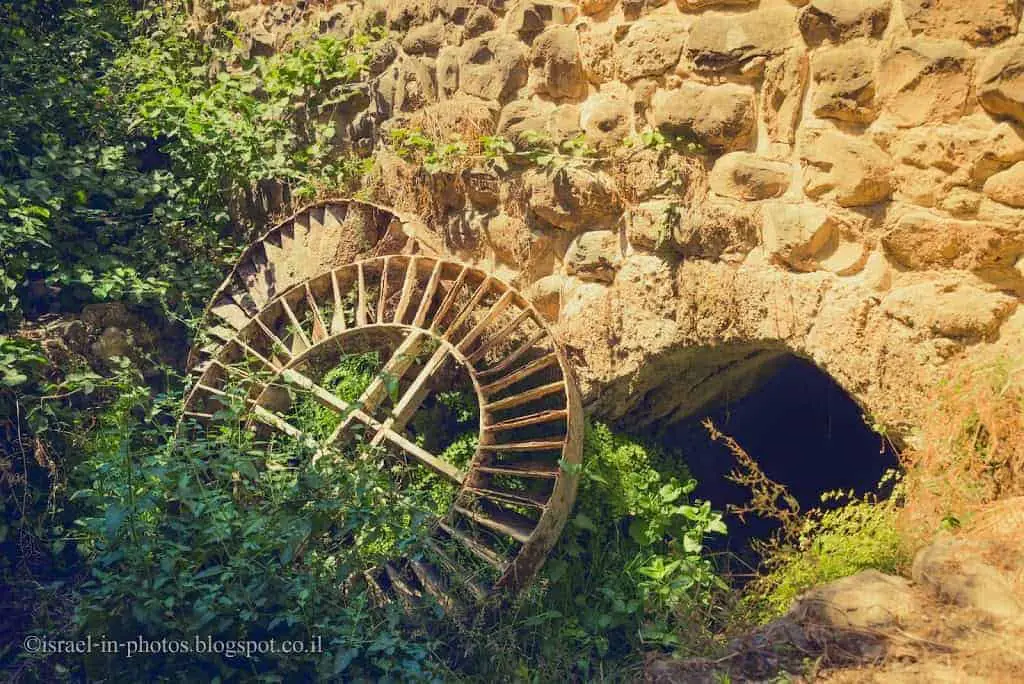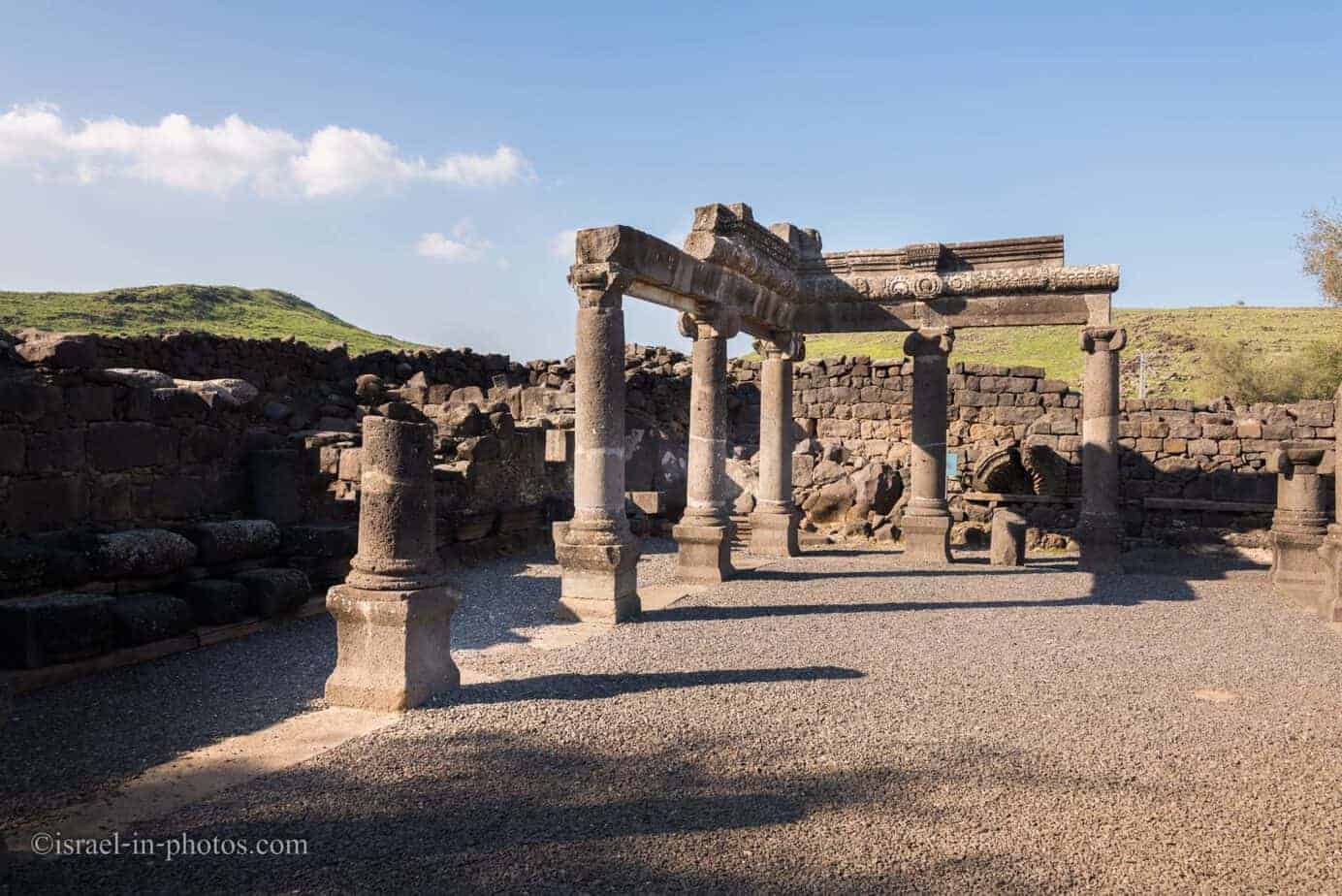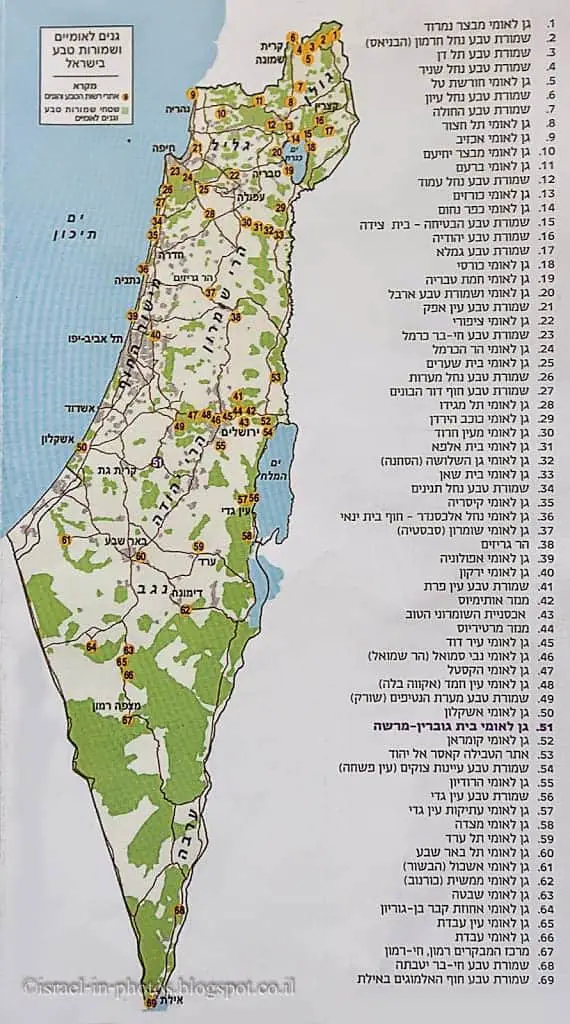The Mizgaga Museum, Nahsholim – Visitors Guide
Mizgaga Museum presents glass art and archeological artifacts from Tel Dor. And it is a historical building created by Baron Rothschild to create bottles for wineries.
Table of Contents
Map
The Mizgaga Museum is situated in Kibbutz Nahsholim, about 30 km south of Haifa. And the easiest way to reach this spot is by entering “The Mizgaga Museum” into Waze or clicking this link.
Directions for drivers: Link to Waze and Link to Google Maps
Directions for public transport: Link to Moovit
Interactive map of the area:
Following the directions will lead you to a big and free parking lot. To your right, you will see a yellow gate. The guard told us to park outside, and then we walked to the museum.

Note: if the gate is closed, you can call the phones in the photo above.
From the gate, it is about a five-minute walk to the museum.
Entrance Fee
Adult – 28 NIS.
Child, student, and senior – 14 NIS.
Note: we visited The Mizgaga Museum and Tel Dor during Hanukkah 2021. And during the holidays, Israel Antiquities Authority offered free tours and entrance. Thus, if holidays are approaching, check if there are special activities.
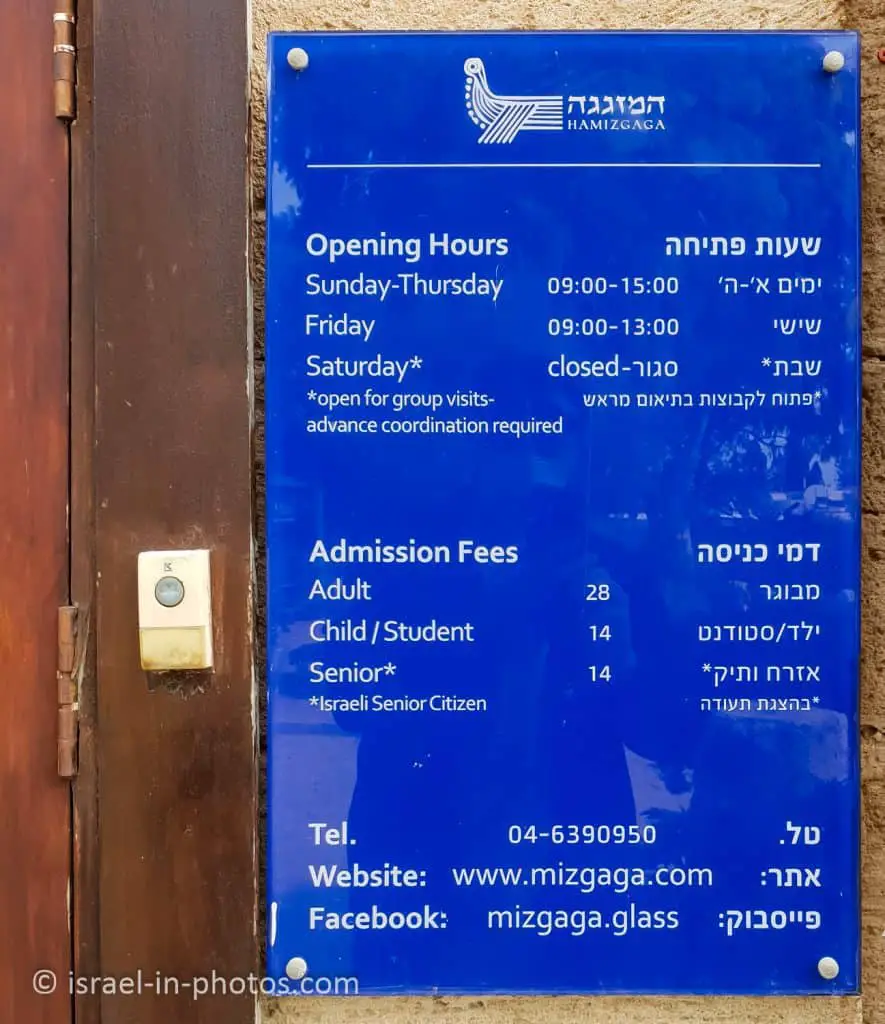
Opening Hours
Sunday – Thursday: 09:00 – 15:00
Friday: 09:00 – 13:00
Saturday – open only for groups.
Contact Information
Phone: 04-6390950
Email: mizgaga1891@gmail.com
Restrooms
There are restrooms behind the museum building.
About Mizgaga Museum

Mizgaga – A Museum for regional archaeology and glass is housed in a two-story stone structure in the heart of Kibbutz Nahsholim and within a short walking distance from Tel-Dor.
The building was built in 1891, an initiative by Baron Rothschild to be a factory for producing glass wine bottles. Meir Dizengoff, who was later to become mayor of Tel-Aviv, was appointed manager of the factory. Because of the numerous difficulties – malaria, the local sand’s unsuitability, and a lack of profitability – the factory was closed and abandoned within a few years of its opening.
In 1980, members of Kibbutz Nahsholim began to restore the structure. At the same time, archaeological excavations began at Tel Dor and nearby bays, and the factory became a charming and unusual museum showcasing contemporary glass art alongside local archaeology.
Source: official site
At the Yard of the Museum
Near the building of the Mizgaga Museum, you can find interesting archeological artifacts.

So let’s go over some of the artifacts.
Roman Milestone
Milestones were part of the Roman road system. Romans placed a milestone every Roman mile (1480 meters) to mark distances. These were usually stone pillars with inscriptions. The inscription usually had two parts: the distance and words of glory for the rulers (most likely emperor).

A milestone was discovered on the seabed near Haifa. Milestones were placed at intervals of 1480 meters along the entire road system of the Roman Empire (one thousand double steps – mille passum). Each milestone was inscribed with words of glory For the Roman emperor or procurator.
Source: sign

Glass Production Furnaces
Two melting chambers were relocated from a glass workshop unearthed in Khirbet Asafna near Yagur. This is the oldest workshop for the production of raw glass discovered in Israel. The sand required for the process was brought from the region of Akko, and the natron (sodium carbonate) was shipped from Egypt. At the end of the process, the furnaces were dismantled, and chunks of glass were traded for the manufacture of vessels in the region and throughout the Roman Empire. The Late Roman Period.
Source: sign



Mooring Stone
Mooring stone weighing 800 kilograms was used for anchoring boats at the southern entrance of the port at Dor.
From the ninth century BCE.
Source: sign


Ancient anchors
Ancient anchors found in the bays of the Carmel Coast used to secure ships in port. The anchor was attached by a rope inserted through the opening in the stone. Anchors with three holes had wooden pegs which reinforced its grip in the seabed.
Source: sign

Inside The Mizgaga Museum
As I mentioned, we joined tours at the Mizgaga Museum and Tel Dor. Our tour of the museum started in one of the most impressive halls. In this room, you can find many archeological remains from Tel Dor.
Archeology Rooms in Mizgaga Museum

One interesting fact that amazed me is that over 70% of wine jars had remains of cinnamon. During that period, cinnamon was brought from India. That indicated how well trading routes were developed. Moreover, it also tells us something about the people living here.



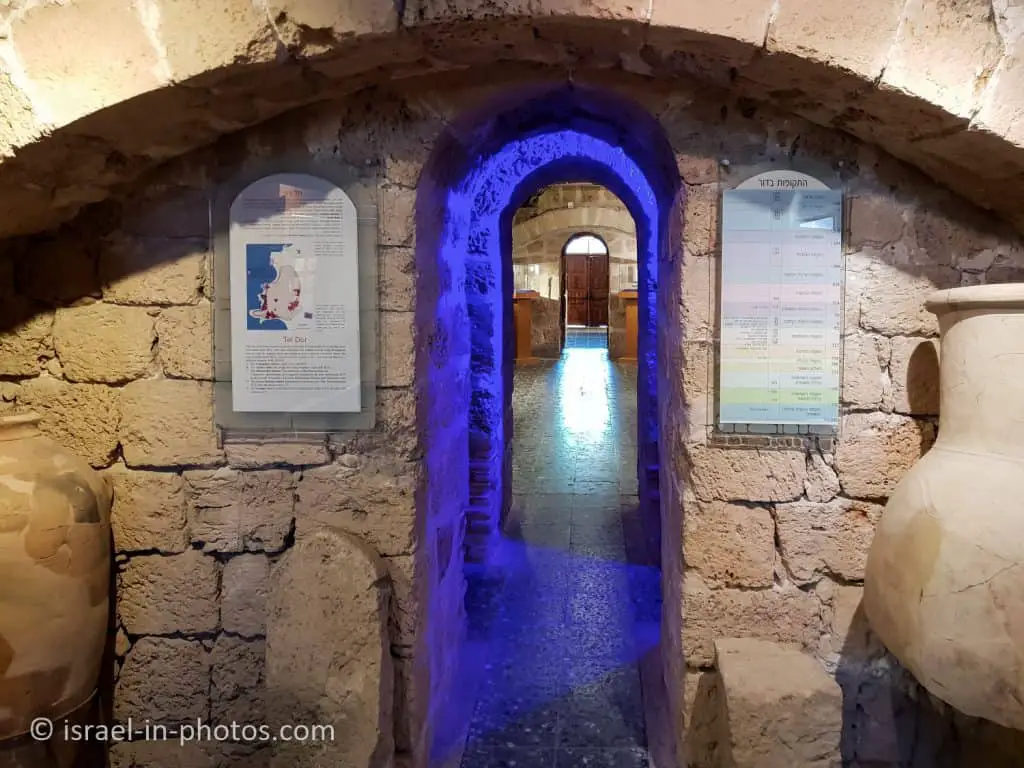
Tel Dor was inhabited over different periods. Thus there are archeological remains from various periods. And if you want to see what remains on location, you can walk about one kilometer to Tel Dor.

Here are several additional photos of archeological remains:



Napoleon at Dor
You probably know that during the Egyptian expedition, Napoleon Bonaparte conquered Jaffa, Ramla, and even the citadel in Safed. But his siege of Acre was unsuccessful.
You can find several exhibits in this room, including several canons that Napoleon’s army threw into the sea after they retreated from Acre.

Here is what the sign says about the cannon to the right:
The Turkish cannon bears the Ottoman emblem of the moon – crescent and star. Beside the flaring hole, there is the calligraphic monogram of Sultan Salim the Third (1789-1807). This was one of the cannons looted by the French during the battle of Jaffa and subsequently cast into the sea at Tantura.
Note: Tantura was Palestinian Arab fishing situated on the ruins of the ancient city of Dor.


Tel Dor Mosaic
Since I already wrote about this mosaic in Tel Dor, I will not elaborate on this topic here. And instead, show several photos.
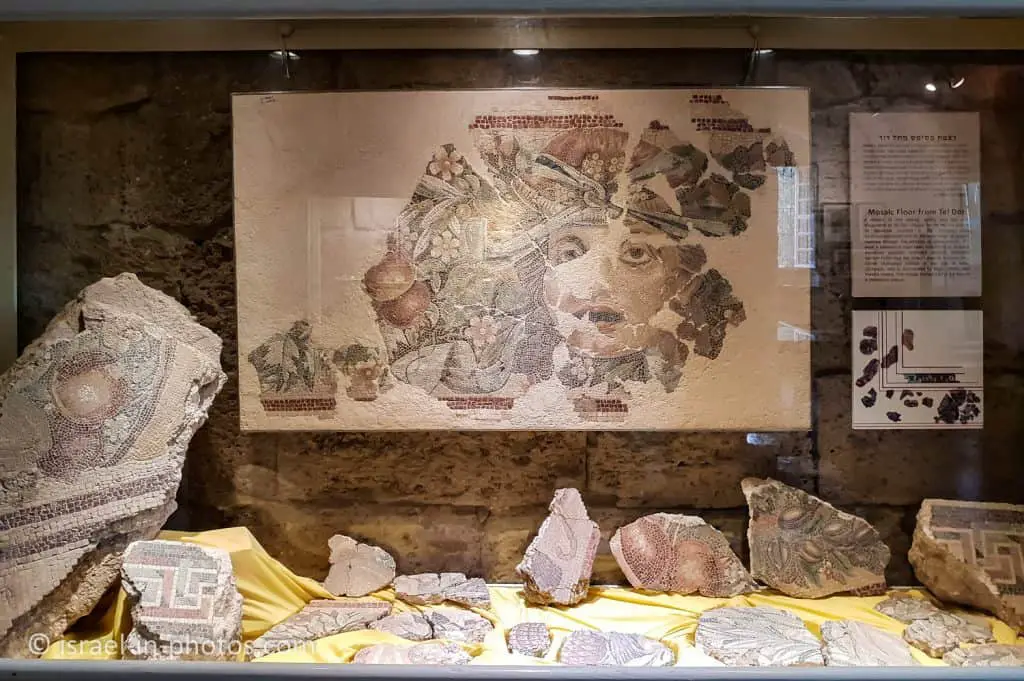


Glass Exhibition
To create glass, you need sand. And sand reaches Israel with the wind from Egypt (Nile Delta). Our guide told us that Haifa Bay is an obstacle to the sand. Thus, you can find fine sand to the north of Haifa, for example, Acre. Phoenicians knew that and took sand from that area. But when Baron Rothschild created the Mizgaga, they did not know that and took sand from the Dor area. This sand is coarse, which may be one reason why this factory did not survive long.
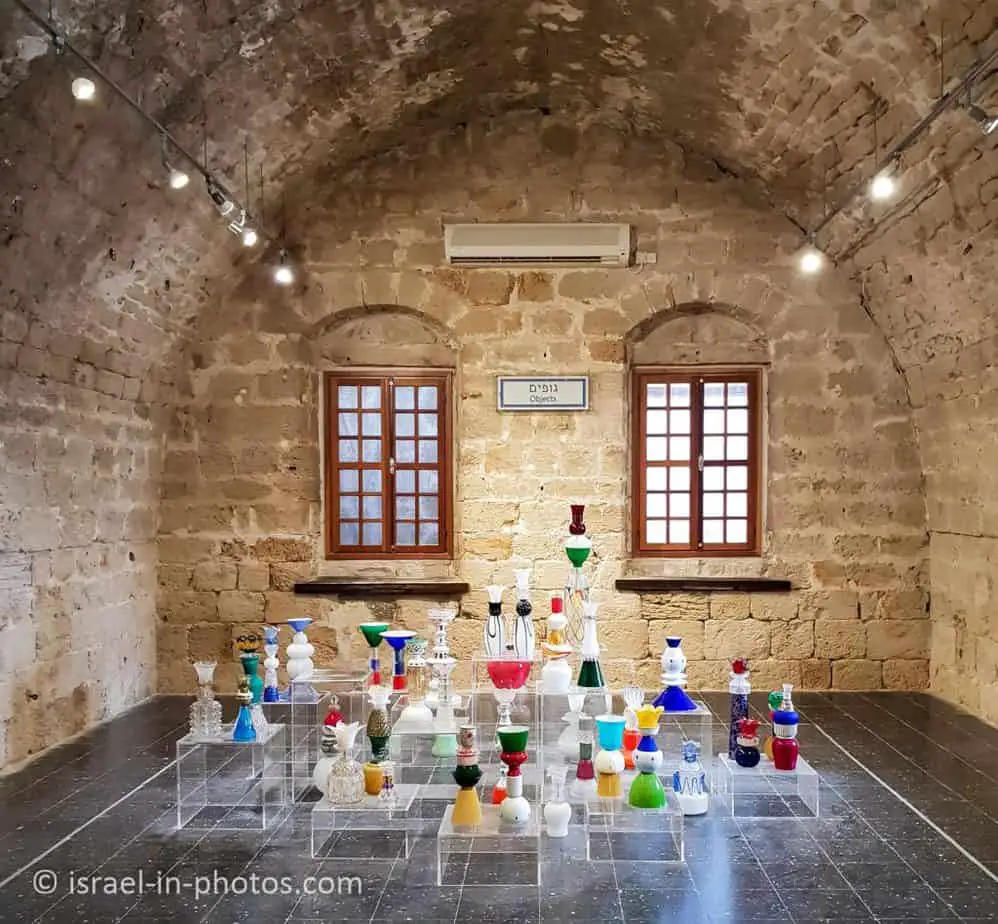
Here are several additional photos from the glass exhibition:

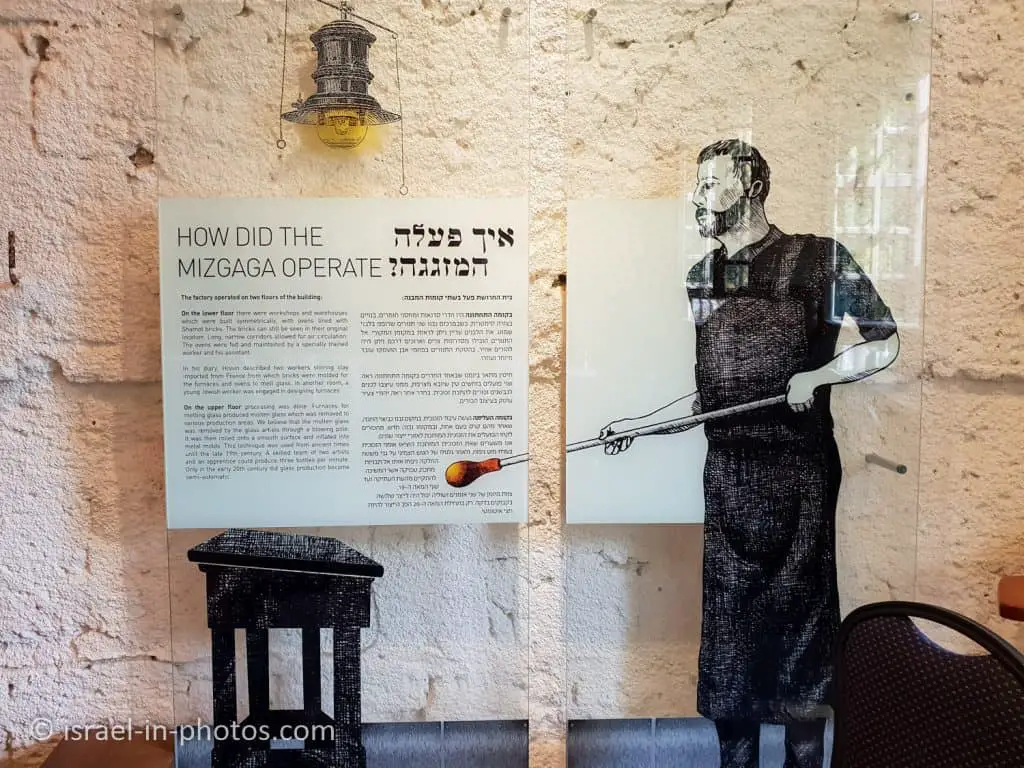

The Purple Color
At Tel Dor, we visited the purple dye industrial zone. The purple color was produced from snails.

Blue is mentioned in Jewish texts primarily as a Torah Commandment to affix a blue thread to the corner of a garment as a reminder of its use in the curtains of the Tabernacle and priestly garments. The secret of the production of Biblical Blue dye was lost generations ago and so the blue coloring of the fringe disappeared fifteen hundred years ago.
At the end of the 19th century, both researchers and rabbis began trying to recover the lost blue. The Radzyner Rebbe concluded that the blue was produced from a squid indigenous to the Mediterranean Sea. Rabbi Dr. Isaac Herzog, later the Chief Rabbi of Israel, proposed in his dissertation published in 1913, that the source of the Biblical Blue is the Murex trunculus snail.
Today most scholars agree that there is a common origin to blue and purple, the color varies due to exposure to the sun, as observed by Vitruvius more than two thousand years ago. Without any exposure to the sun, the color is red to purple but with the help of the sun, the Biblical Blue color Is attained. This color change is due to the chemical composition of specialized molecules, primarily monobromo indigotin, the color-producing substance of the snail in particular the spiny-dye Murex, which encourages the color change by the oxidation process.
Source: sign

Stone of the Holy Golgotha
And the last thing I want to mention is the stone of the Holy Golgotha.

This marble column was found in 1952 approximately 100 meters from the site of the excavation of the Episcopal Basilica of Dor. The column bears a Greek inscription meaning ‘Stone of the Sacred Golgotha’. Beneath the inscription, there was a hollow cross. The hollow probably contained a fragment of the Golgotha, the rock of the Calvary, enclosed in a cross-shaped metal relic box riveted to the column. This prized relic surely attracted many pilgrims traveling either by land or sea, disembarking at the port of Dor. Both the church and the column are dated from the second half of the fourth to the ninth century CE.
Source: sign
And if you want to find out more about Golgotha, see the Church Of The Holy Sepulchre.
Summary
The Mizgaga Museum is a lovely place. And though it is not large (people typically spend 1-1.5 hours), there are many things to see. Also, you can combine a visit to the museum with a walk to Tel Dor (the distance from the museum to Tel Dor is about one km). And lastly, this area has many attractions, and you can explore them using the interactive map above.
Have you visited the Mizgaga Museum? Tell us in the comment below about your experience.
That’s all for today, and I’ll see you in future travels!
Stay Tuned!
Additional Resources
Here are several resources that I created to help travelers:- Trip Planner with Attractions and Itineraries is the page that will help you create your perfect travel route.
- What is the Best Time to visit Israel? To answer this question, we will consider the weather, prices, holidays, festivals, and more.
- Information and Tips for Tourists to Israel will answer the most common questions tourists have about Israel (including safety, passports, weather, currency, tipping, electricity, and much more).
- Israel National Parks and Nature Reserves include a complete list, top ten, map, tickets (Israel Pass, Matmon, combo), and campsites.
- If you are looking for things to do, here are the pages for Jerusalem, Tel Aviv, Haifa, Sea Of Galilee, Akko (Acre), Eilat, Nazareth, Safed (Tzfat), and Makhtesh Ramon.


